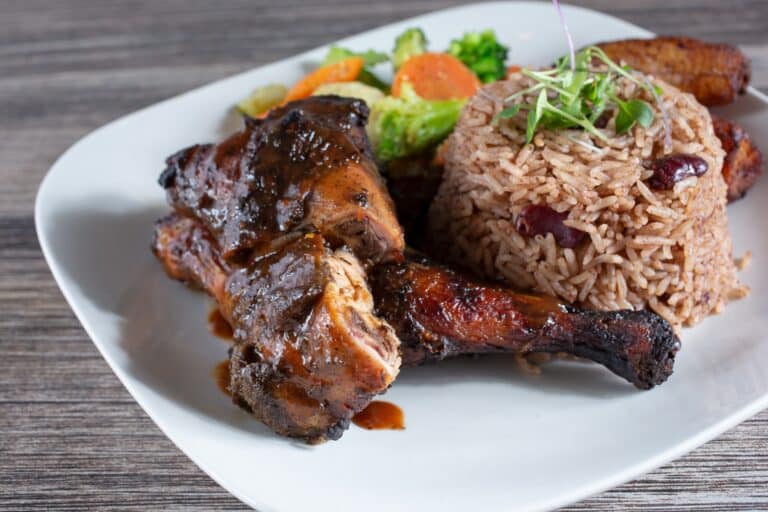Jamaican cuisine tells the story of Jamaican history, with classic Jamaican dishes boasting influences from African, Spanish, British, Indian, and Chinese cuisines. Whether you’re in New York, Miami, Negril, or Kingston, any of these traditional Jamaican foods highlights the heritage of the beloved island.
At Remitly we’re honored to serve customers who bring their talents, dreams, and culinary traditions to new countries. Enjoy this latest installment in our series on global cuisines.
1. Jerk Chicken
Jerk Chicken is one of Jamaica’s most famous dishes. The term “jerk” comes from the Spanish word “charqui,” which means dried meat, similar to jerky. The chicken is marinated in a spicy blend of scotch bonnet peppers and pimento (allspice), then slow-cooked over pimento wood, imparting a unique smoky flavor. This method dates back to the African Maroons, who used it to preserve meat.
Check out the YouTube channel “Cook Like a Jamaican” for lots of guides to making classic island recipes, including this one for grilled jerk chicken.
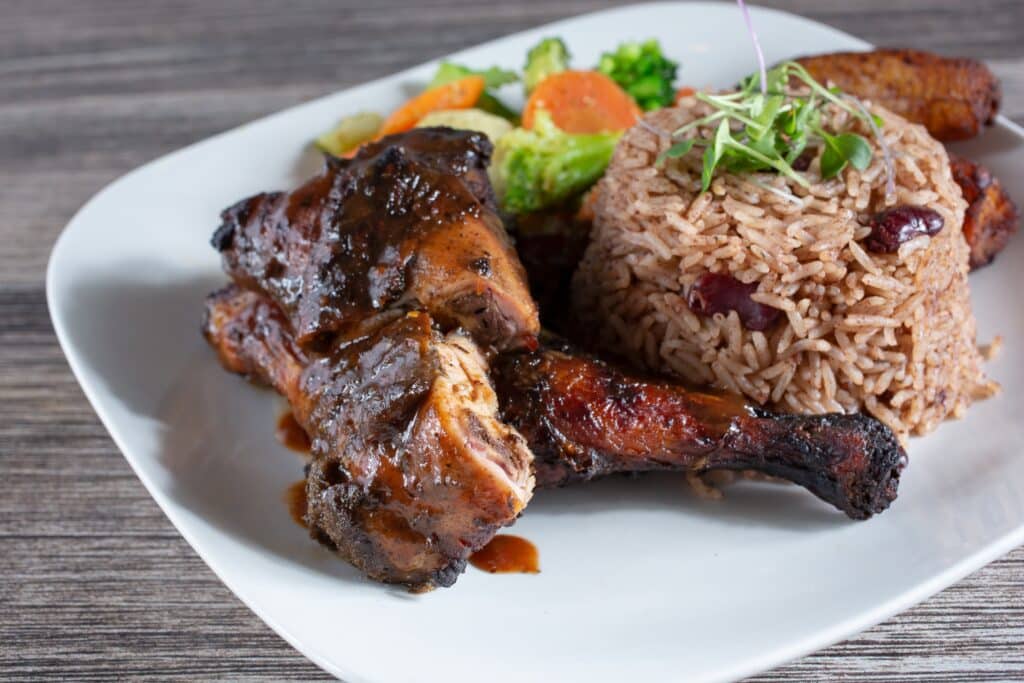
2. Ackee and Saltfish
The national dish of Jamaica, Ackee and Saltfish, combines the buttery texture of ackee fruit with salted codfish, onions, peppers, and spices. It’s related to other Caribbean “saltfish” dishes like those from St. Lucia and St. Kitts & Nevis.
Ackee was brought to Jamaica from West Africa in the 18th century and has since become a breakfast staple, often served with fried dumplings or callaloo. The name “ackee” is derived from the Akan word “akye fufo,” referring to the fruit.
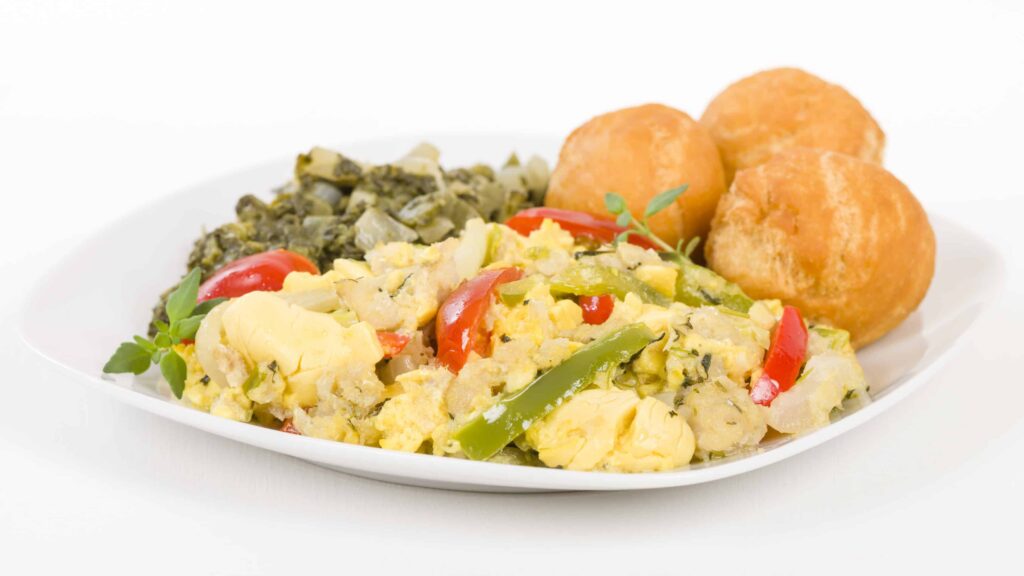
3. Oxtail Stew
Oxtail Stew is a beloved dish featuring slow-cooked oxtails simmered with beans, carrots, and spices. The name “oxtail” originally referred to the tail of an ox, though it now commonly means the tail of cattle. This hearty stew is traditionally enjoyed on Sundays and special occasions, reflecting the British influence on Jamaican cuisine.
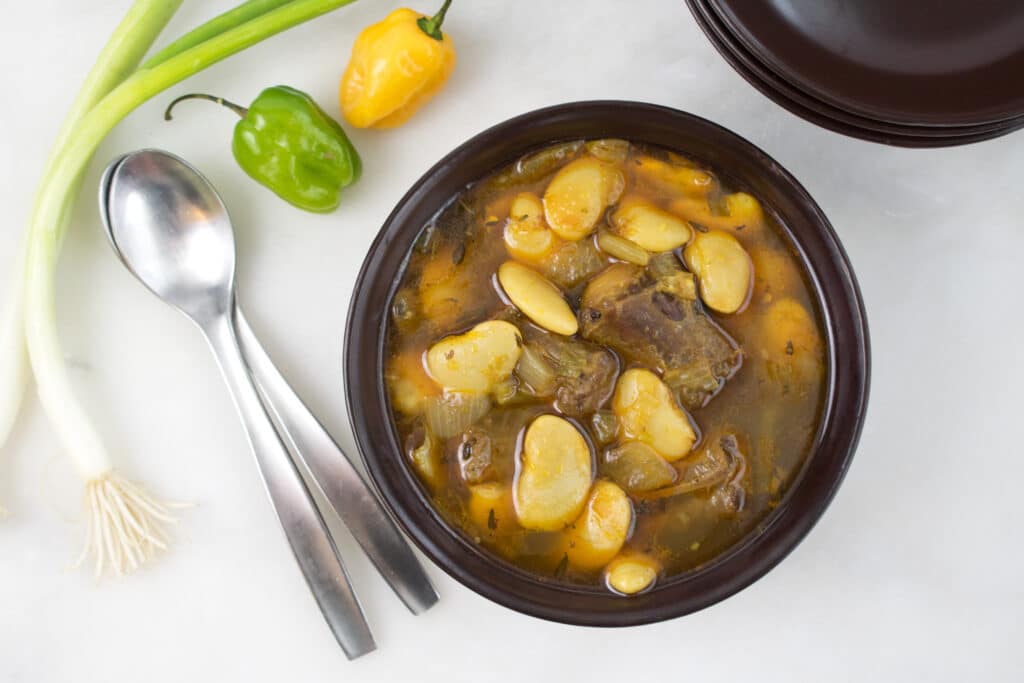
4. Jamaican Patties
Jamaican Patties are flaky pastries filled with spiced beef, chicken, or vegetables. The name “patty” comes from the French word “pâté,” referring to a meat-filled pastry. These portable snacks are a favorite street food, reflecting the influence of Cornish pasties brought by British settlers.
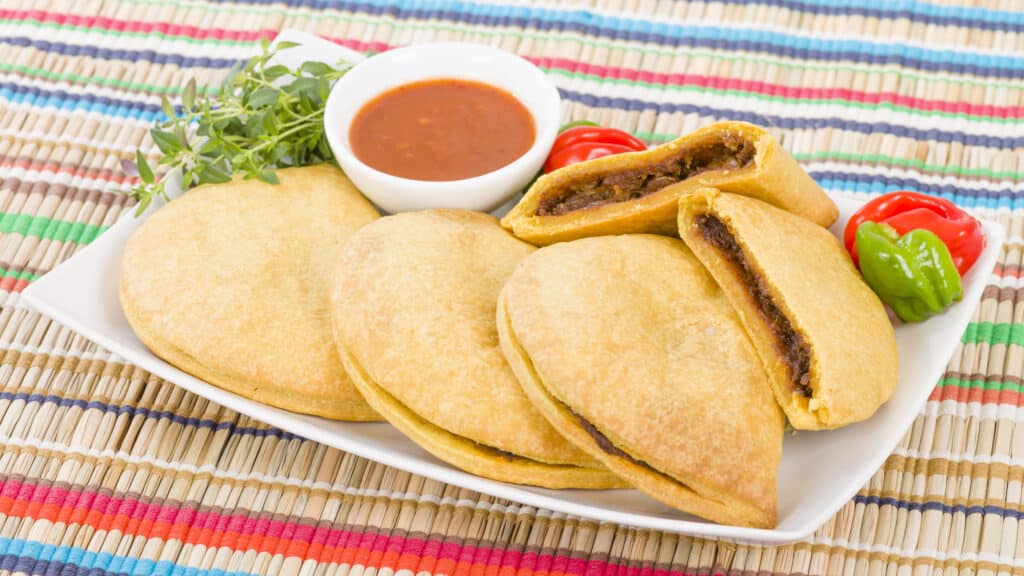
5. Curry Goat
Introduced by Indian indentured laborers in the 19th century, Curry Goat is a flavorful dish made with tender goat meat, curry spices, and sometimes potatoes. The word “curry” comes from the Tamil word “kari,” meaning sauce. It’s commonly served with rice and peas.
The Caribbean cooking site CaribbeanPot has a recipe for classic Jamaican curry goat with videos and photos to guide you.
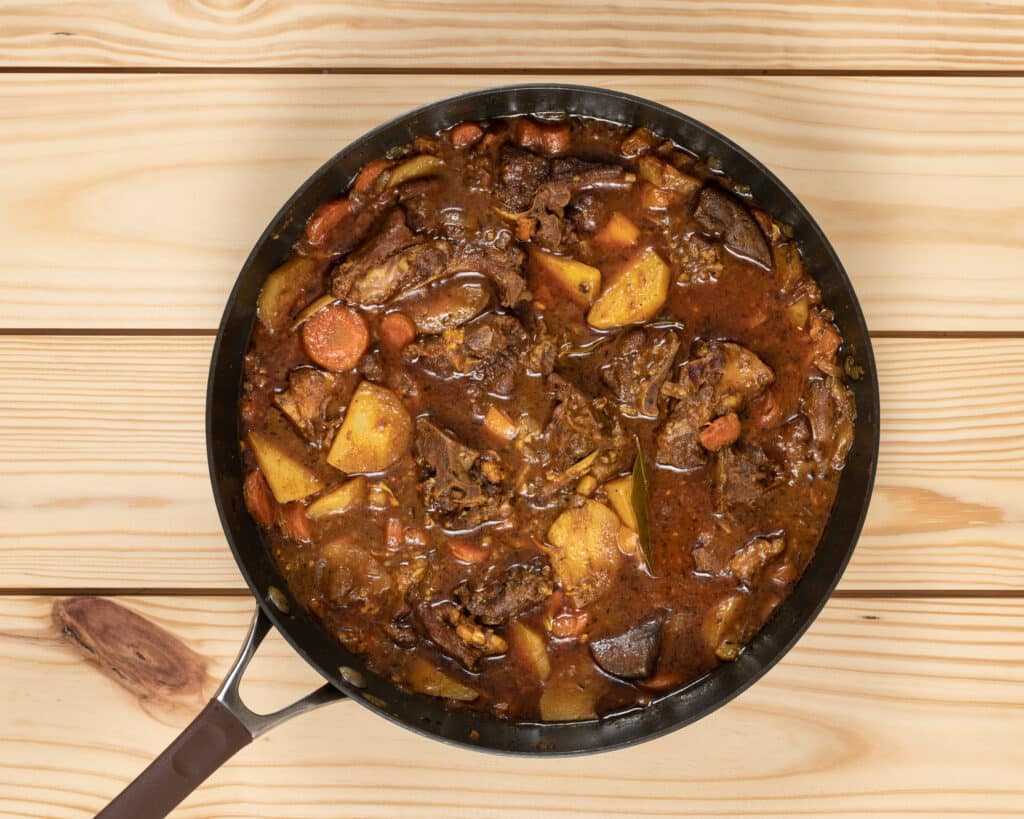
6. Fried Plantains
Fried Plantains, known as dodo in Africa, are a sweet and savory side dish. The name “plantain” comes from the Spanish and Portuguese word “plátano,” meaning banana. Plantains are sliced and fried until golden, often accompanying main dishes like jerk chicken or oxtail stew.
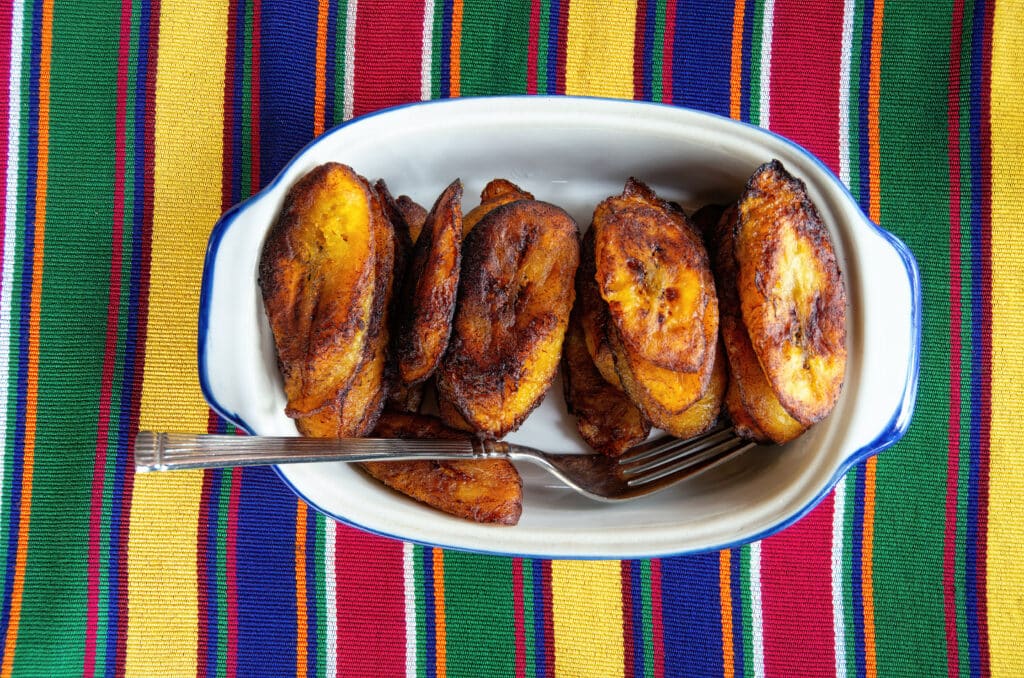
7. Escovitch Fish
Escovitch Fish involves marinating fried fish in a spicy vinegar-based sauce with onions, carrots, and scotch bonnet peppers. The name “escovitch” is derived from the Spanish word “escabeche,” meaning pickled. This dish is typically served with bammy (cassava bread).
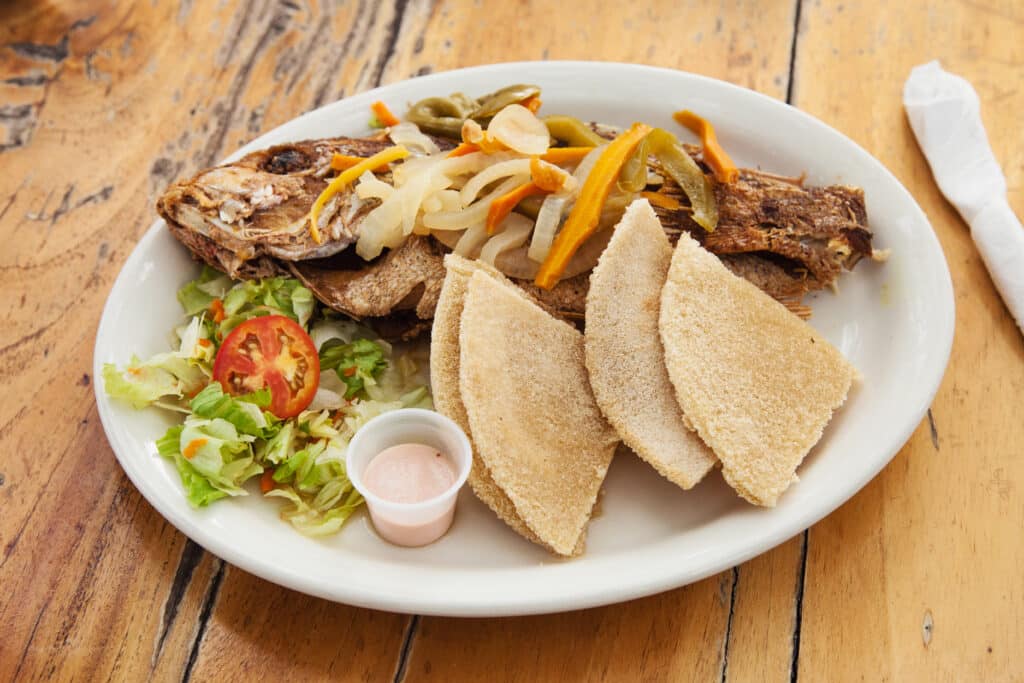
8. Brown Stew Chicken
Brown Stew Chicken features chicken browned and simmered in a rich gravy made with tomatoes, onions, and spices. The name “brown stew” refers to the browning process of the chicken, which adds depth of flavor to the dish. This hearty meal is a staple in Jamaican households.
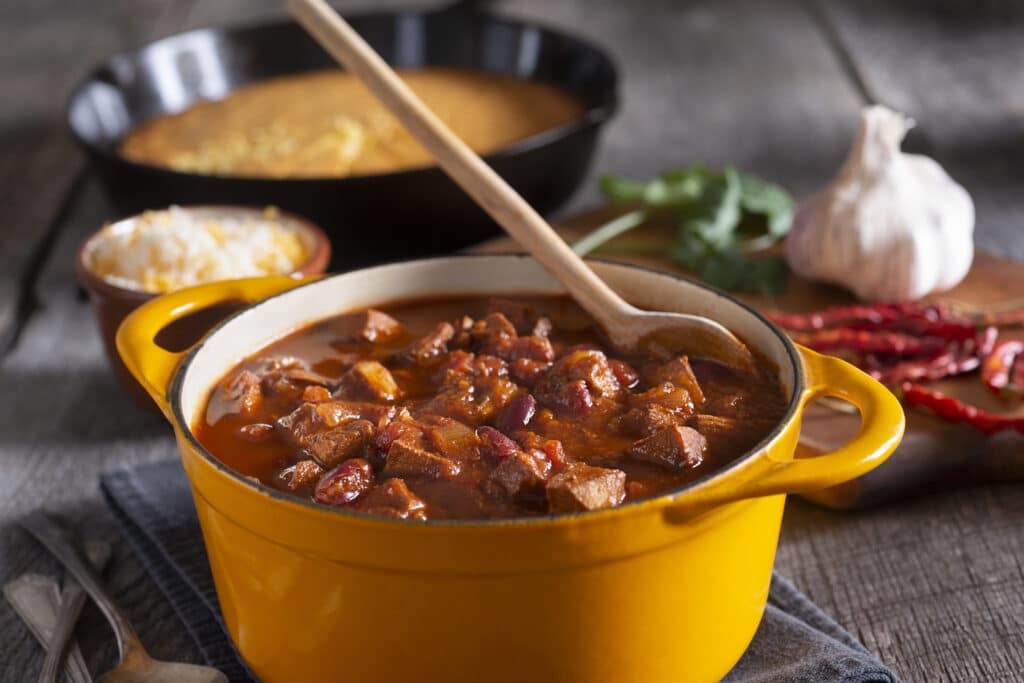
9. Callaloo
Callaloo is a leafy green vegetable dish, similar to spinach, cooked with onions, garlic, tomatoes, and scotch bonnet peppers. The name “callaloo” comes from the Caribbean and West African languages, referring to different leafy vegetables. This dish has African origins and is a common side or breakfast item.
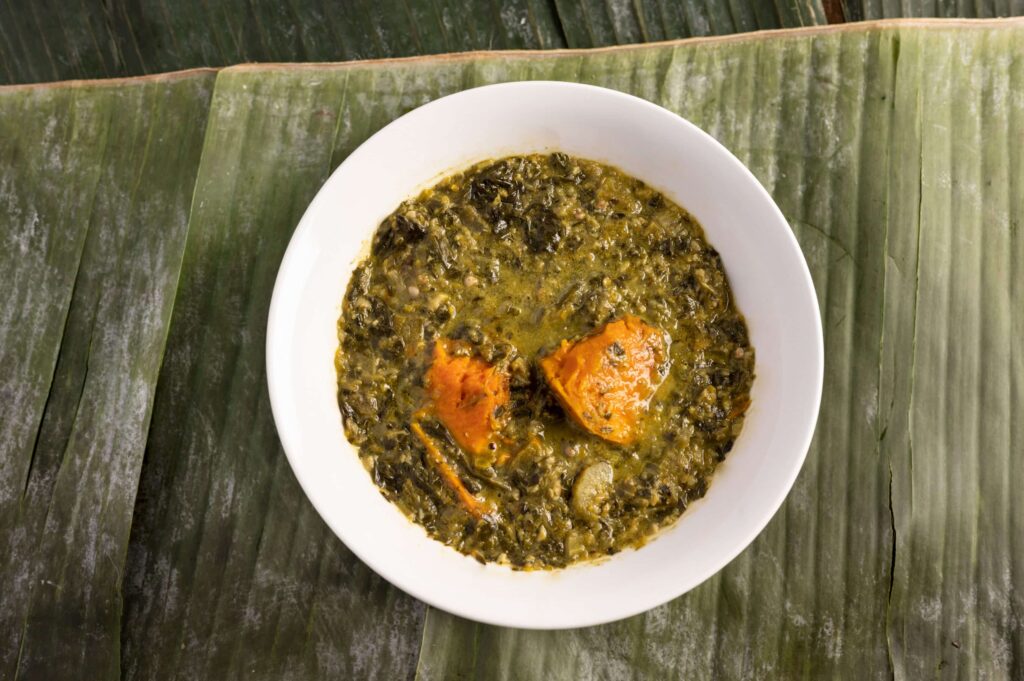
10. Mannish Water
Mannish Water is a traditional Jamaican soup made from goat’s head and feet, seasoned with green bananas, yams, and spices. The name “mannish” implies that the soup is believed to boost virility and stamina. It’s often served at large gatherings and is believed to have invigorating properties.
11. Jamaican Jerk Pork
Jerk Pork uses the same spicy marinade as jerk chicken. The pork is grilled over an open flame, resulting in a juicy and flavorful dish that is popular at barbecues and street stalls. The term “jerk” refers to the cooking technique involving spices and slow cooking.
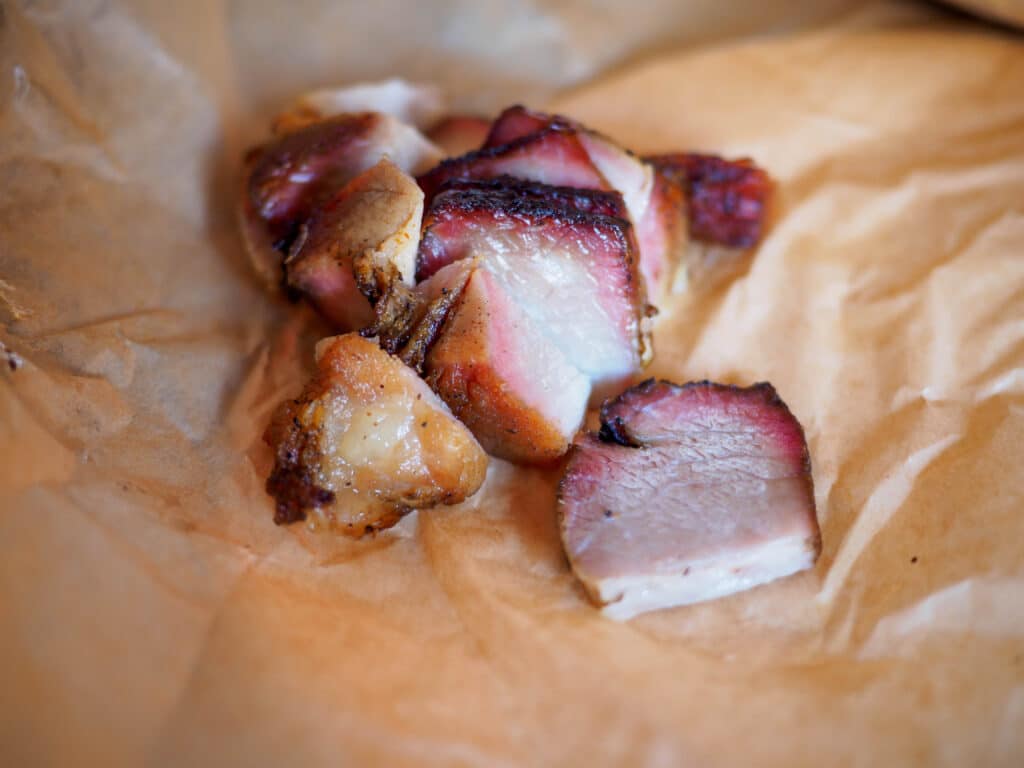
12. Sweet Potato Pudding
Sweet Potato Pudding is a traditional Jamaican dessert made with grated sweet potatoes, coconut milk, and spices. The name “pudding” in Jamaica refers to a dense, sweet cake-like dessert, often enjoyed during holidays and special events.
13. Gizzada
Gizzada is a sweet tart filled with a spiced coconut mixture. The name “gizzada” likely comes from the Spanish word “quesada,” a type of cheesecake. These pastries are a popular dessert, showcasing the island’s love for coconut-based sweets.
The YouTube channel “Toya’s Kitchen” has step-by-step videos for making both gizzada and sweet potato pudding.
Additional Dishes
- Bammy: A flatbread made from cassava, often served with fried fish. The name “bammy” is derived from the Arawak word “bami,” meaning cassava bread.
- Coco Bread: A soft, slightly sweet bread that pairs well with patties. The name “coco bread” comes from the inclusion of coconut milk in the recipe.
- Stew Peas: A hearty stew made with red peas (kidney beans), meat, and coconut milk.
- Curry Chicken: Similar to curry goat but made with chicken, reflecting the Indian influence on Jamaican cuisine.
- Roti: A flatbread of Indian origin, often served with curried meats or vegetables.
- Breadfruit: A starchy fruit often roasted, fried, or boiled. Its name refers to the fruit’s texture, which resembles freshly baked bread.
- Okra: Often included in soups and stews, reflecting African culinary traditions. The name “okra” comes from the Igbo word “ọ́kùrụ̀.”
- Fritters: These can include saltfish fritters, a popular snack made from salted cod.
Bringing Jamaican Vibes to Your Table
Whether you are enjoying takeout from a local Jamaican restaurant or trying your hand at cooking these dishes at home, the rich flavors of Jamaican food will captivate your taste buds.
Want to try Jamaican cooking?
FAQ
What cultures influence Jamaican cuisine?
Answer: Jamaican cuisine is influenced by West African, Spanish, British, Indian, and Chinese cultures.
What is Rastafarian pasta?
Answer: Rastafarian pasta, also known as Ital pasta, is a vegetarian or vegan dish made under Rastafarian dietary principles. It typically includes fresh vegetables, herbs, and spices, avoiding processed ingredients and meat.
Is Jamaican food healthy?
Answer: Jamaican food can be very healthy, especially dishes that include fresh vegetables, lean meats, and fish. However, some dishes are fried or contain rich sauces, so it’s best to enjoy these in moderation.
Where can you find Jamaican restaurants outside the Caribbean?
Answer: Jamaican restaurants can be found in many major cities around the world, including New York City, London, Toronto, and Miami. New York City, particularly areas like Queens and Brooklyn, is home to many Jamaican restaurants where you can enjoy these dishes. Miss Lily’s in NYC is a popular spot known for having some of the area’s best Jamaican food.
How is Jamaican food different from other Caribbean food?
Answer: While Jamaican food shares some similarities with other Caribbean cuisines, such as the use of spices and tropical ingredients, it is distinct due to its unique dishes like jerk chicken, ackee and saltfish, and oxtail stew. The method of jerking, or marinating and grilling meat, is particularly unique to Jamaica.
Where does the name Jamaica come from?
Answer: The name Jamaica comes from the indigenous Taíno word “Xaymaca,” which means “Land of Wood and Water” or “Land of Springs.”
What ingredients are needed for Jamaican cooking?
Answer: Essential ingredients for Jamaican cooking include scotch bonnet peppers, pimento (allspice), thyme, garlic, ginger, coconut milk, ackee, saltfish, plantains, cassava, and various fresh herbs and spices.
